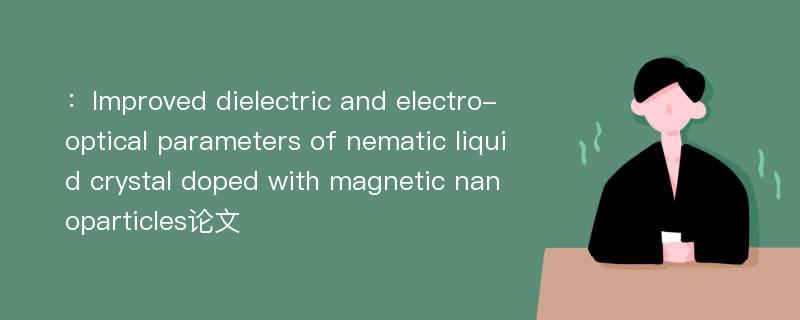
本文主要研究内容
作者(2019)在《Improved dielectric and electro-optical parameters of nematic liquid crystal doped with magnetic nanoparticles》一文中研究指出:This study investigates the effect of magnetic nanoparticles(NPs) on the weakly polar nematic liquid crystal(NLC).Different parameters of dielectric data were measured for both the homeotropic and planar aligned samples as a function of frequency and temperature and the substantial changes have been noticed for the doped systems. Dielectric permittivity has been increased after the dispersion of magnetic NPs in the pure NLC. Dielectric anisotropy has also been influenced by incorporating the magnetic NPs with the NLC molecules. These results were attributed to the dipole–dipole interaction between the magnetic nanoparticles and nematic liquid crystal molecules. Electro-optical study indicated the faster rise time and fall time of the doped systems as compare to pure NLC. Threshold voltage has been calculated and found to be decreased for the doped systems. Moreover, we have also calculated the rotational viscosity and the splay elastic constant for pure and the doped systems. Both the rotational viscosity and splay elastic constant of the doped systems are found to be considerably lower than those of pure NLC. Change in these properties has been explained on the basis of molecular disturbances created by the interaction between the magnetic nanoparticle and LC director. This study reveals that the inclusion of magnetic NPs in weakly polar NLC can be useful to enhance the basic properties of the weakly polar NLC and make it a promising material for many display applications.
Abstract
This study investigates the effect of magnetic nanoparticles(NPs) on the weakly polar nematic liquid crystal(NLC).Different parameters of dielectric data were measured for both the homeotropic and planar aligned samples as a function of frequency and temperature and the substantial changes have been noticed for the doped systems. Dielectric permittivity has been increased after the dispersion of magnetic NPs in the pure NLC. Dielectric anisotropy has also been influenced by incorporating the magnetic NPs with the NLC molecules. These results were attributed to the dipole–dipole interaction between the magnetic nanoparticles and nematic liquid crystal molecules. Electro-optical study indicated the faster rise time and fall time of the doped systems as compare to pure NLC. Threshold voltage has been calculated and found to be decreased for the doped systems. Moreover, we have also calculated the rotational viscosity and the splay elastic constant for pure and the doped systems. Both the rotational viscosity and splay elastic constant of the doped systems are found to be considerably lower than those of pure NLC. Change in these properties has been explained on the basis of molecular disturbances created by the interaction between the magnetic nanoparticle and LC director. This study reveals that the inclusion of magnetic NPs in weakly polar NLC can be useful to enhance the basic properties of the weakly polar NLC and make it a promising material for many display applications.
论文参考文献
论文详细介绍
论文作者分别是来自Chinese Physics B的,发表于刊物Chinese Physics B2019年03期论文,是一篇关于,Chinese Physics B2019年03期论文的文章。本文可供学术参考使用,各位学者可以免费参考阅读下载,文章观点不代表本站观点,资料来自Chinese Physics B2019年03期论文网站,若本站收录的文献无意侵犯了您的著作版权,请联系我们删除。
